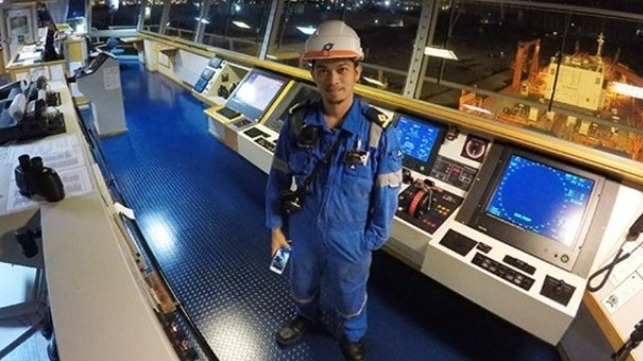DNV: Safety Gaps Emerging as Shipping Industry Transforms

The maritime industry is undergoing significant changes and as this transformation takes place new safety gaps are emerging that will require both leadership and collaboration according to DNV GL to safeguard the future of maritime operations. The classification society I presenting its analysis of the looking safety gaps in a new white paper that explores how the ambitions to become more digital and decarbonize will impact how the industry functions.
Speaking at a press briefing today, DNV GL – Maritime CEO Knut Ørbeck-Nilssen spoke to the ongoing tectonic shifts that he sees transforming the maritime world. He points to the continuing unpredictability in the markets and regulatory complexities which will be compounded by the rush to incorporate new technologies and achieve decarbonization. He believes that the shipping industry reached a tipping point in 2020 with the growing number of orders for dual-fuel vessels along with the growing pressures on the International Maritime Organization (IMO) to accelerate its efforts and timelines.
However, the new technologies and fuels that the industry is focusing on to meet the challenges of the next decades are also creating a new risk landscape and demanding a new approach to safety, according to DNV. They postulate that shipping must be able to adapt and implement the new safety paradigm identified in the white paper to not only become more efficient and sustainable - but safer as well.
“To close the safety gap, we will need a collective, ongoing effort,” said Ørbeck-Nilssen. “As a class society, we can play a leading role by acting as trailblazers for regulators, gathering expertise, partnering with industry, and developing guidelines. Suppliers, owners, charterers, and yards can work together to ensure we treat vessels holistically, over the entire lifecycle, rather than a collection of separate sub-systems. We need to recognize how any single decision, for example, the choice of fuel or introduction of a new digital system, impacts upon other ship systems, the vessel as a whole, and even the fleet. But, if we can all work together, step out of our silos, we can develop the procedures and competencies needed to meet these challenges and enable a culture of continuous improvement.”
Looking at the landscape within the maritime industry, DNV believes that the pace of change is accelerating requiring new thinking to meet the challenges. They are calling for the IMO to continue to lead with structure but also say that all parts of the industry must collaborate, sharing lessons learned and new approaches to inform and shape future regulations and operations.
Exploring the emerging twin trends of digitalization and decarbonization, DNV points to the different safety-related risks associated with these trends. Digitalization, for example, increases system complexity and introduces new ways of operation and collaboration. They cite for example the multitude of monitoring systems that the ship’s crew is now presented with that require better integration starting early in the process along with the revised presentation in order not to overwhelm and hide the important alarms from the routine.
Similarly, decarbonization involves a significant increase in the use of alternative fuels and operations, many of which require a new learning curve. To deal with these, the white paper focuses heavily on the interaction between technology, organizations, and people emphasizing the role of collaboration. They say the industry can contribute to learnings such as how to handle battery overloads and potential fires or the handling of new fuels contributing to the formulation of procedures and regulations.
“If we want to ensure our industry transforms safely, we must embrace the idea that whenever we are developing new technologies, systems and processes, the end-user must be central to that development process,” said Fenna van de Merwe, Principal Consultant at DNV GL – Maritime, and the paper’s lead author. “Our aim should be that throughout the industry we have a shared focus that in both design and operation we are supporting people in their work and decision making. This is essential to understanding these new risks and to building the safety barriers that will enable us to realize the potential of these new technologies and processes safely.”
Discussing the challenges that the emerging trends will present for the industry van de Merwe called for a top-down approach to safety. She said the maritime industry must recognize that people’s roles are evolving requiring integration of the technologies while creating a human-centric design.
DNV said that it is presenting the white paper to start the discussion on how every maritime organization can play a part in facilitating the safe and efficient performance, by balancing technology and personnel, ensuring the overall wellbeing of their people and continuing to improve the safe, future operation of the maritime industry.
